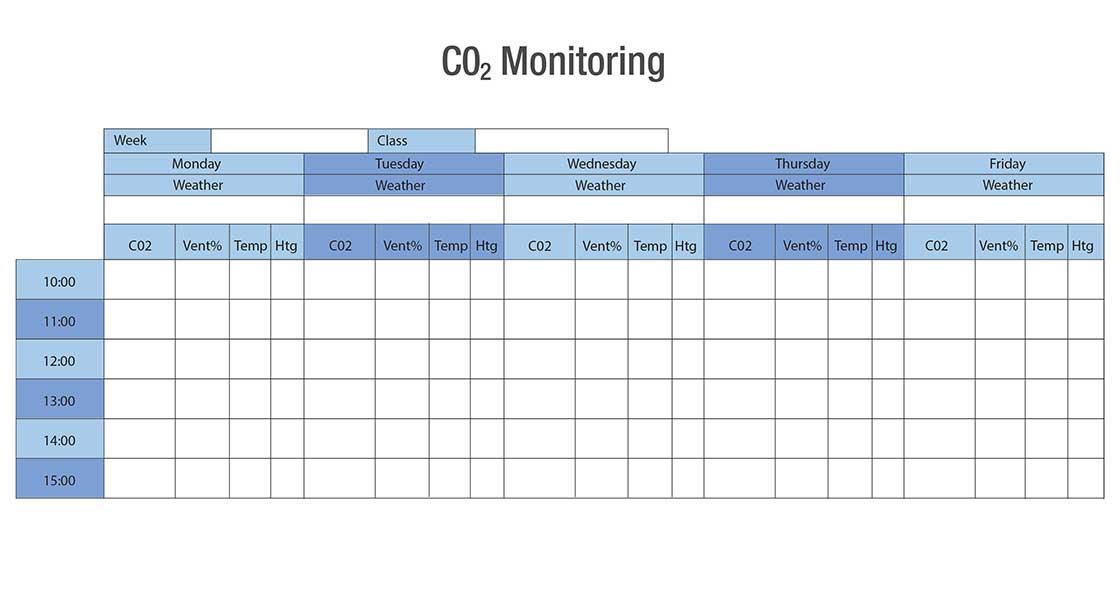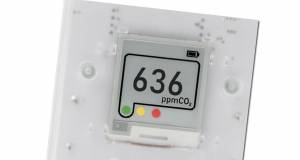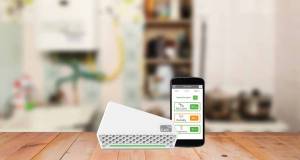- Blogs
- Posted
CO2 Monitoring in Classrooms: Plain English Guide for Teachers
By Simon Jones of the Air Infiltration and Ventilation Centre.
This simple guide is generic and should be appropriate for any classroom and CO2 monitor
Why monitor CO2?
CO2 is a gas with a known background level – the kind of level you’d generally find outside, which currently stands at roughly 420 ppm (parts per million). We also breathe out CO2 at a known rate, so between the amount of people breathing, the size of the space and the amount of outside air we bring in, we can use CO2 as a guide to tell us how well the ventilation is working. In the context of this pandemic but also for good general health and wellbeing, ventilation is an important part of reducing risk.
What is good and not good?
It is very hard for us, as humans, to feel what is good or bad air quality. We can, to a degree, feel if a room is uncomfortable or stuffy, but it is hard to quantify.
If a room has a mechanical ventilation system that can deliver a defined volume of air, then it can be set to meet certain levels. In such circumstances, we usually don’t have to worry about ventilation.
Most classrooms however rely on windows for ventilation. This requires us to manage window opening and react to changes in the forces (weather) that drive how much air comes in, by adjusting how open or closed windows are. What might be enough on one day – or even at one moment in a day – might not the next because of wind or temperature.
How do we know we are opening windows enough or that we haven’t closed them too much because it’s cold?
That’s where CO2 monitors can help. In most classrooms the aim should be, ideally, to keep levels of CO2 below 800 ppm, although 1000 ppm may be acceptable. Window opening should start to increase as CO2 climbs above 1000ppm.
If CO2 is above 1500ppm for an hour or more despite the teacher’s best efforts, it indicates that the room is under-ventilated, and something else may need to be done.
Some important points about CO2 monitors
- CO2 can change quite quickly as people move around and there is air movement in the rooms. The focus should be on averages over time. Is it mostly below 800 or not? Is it hanging around 1300 ppm or 1700 ppm?
- CO2 monitors are not alarms. There are no rules to say that 1500ppm is bad or not. The levels are just a guide, an indication of how much outside air the room is getting. See the monitor as a tool.
- Keep the monitor away from windows and doors and direct sunlight, to ensure that what you are seeing on a monitor is a fair reflection of the space.
- Ideally you should have monitors in each classroom. If you are moving a monitor, try to record the date of when it was moved, and the change in location, so that this can be considered when assessing logged data.
- And importantly, because the monitor measures the air you breathe, it needs to be at least one to two metres away from people. This can be a tall order in classrooms with limited access to plug sockets, but it’s important to really think about where the monitor is. It’s no good sitting on a desk with someone breathing on it.
- Lastly, check that the monitor is showing a low reading on the device of around or below 450ppm at the start of the day. It’s important to check the levels on the monitor every now and then at the start of the day, which should get close to background (outdoor) CO2 levels, assuming the room has been left unoccupied over night. You can then be sure it’s correctly calibrated and giving you a true reading as the school day starts and space is filled.
Follow manufacturer’s guidance about how to calibrate the device if required. This should be a rare problem to encounter in classrooms.
In summary
- If you can keep a classroom below 1000 ppm (ideally 800ppm) and with comfortable temperatures, then the space is working
- If you can’t keep it below 1000 ppm and comfortable then the space is not working. Can you turn up the heat, improve ventilation or supplement ventilation in the short term with a portable HEPA filter, for example?
- If you can’t keep it below 1500 ppm regardless of temperature or your best efforts of opening windows then the space has a fundamental problem with ventilation that will need to be addressed.
We have created a form to help you record information to assess the classroom – to supplement information from the monitor with additional pertinent information.
Fill out the form to record
- The weather on the day (is it cold, mild, windy, what wind direction, what was the average temperature?)
- CO2 levels (think the average over the last hour)
- Ventilation % (100% is everything open- 0% is everything closed)
- Temperature
- Whether the heating is on
The information that schools record now, in winter, will provide the data needed to improve the space now and over the summer for next winter.

To download the form click here or right click and 'save as...' the image above.
Related items
-
 Let’s bring ventilation in from the cold
Let’s bring ventilation in from the cold -
 Poor ventilation a Covid risk in 40 per cent of classrooms, study finds
Poor ventilation a Covid risk in 40 per cent of classrooms, study finds -
 Growing use of CO2 monitors to slow Covid spread
Growing use of CO2 monitors to slow Covid spread -
 Roll out CO2 sensors to slow spread of Covid-19 – NuWave Sensors
Roll out CO2 sensors to slow spread of Covid-19 – NuWave Sensors -
 Shooting the moon
Shooting the moon -
 Breathing room - why it's time to get serious about ventilation
Breathing room - why it's time to get serious about ventilation

